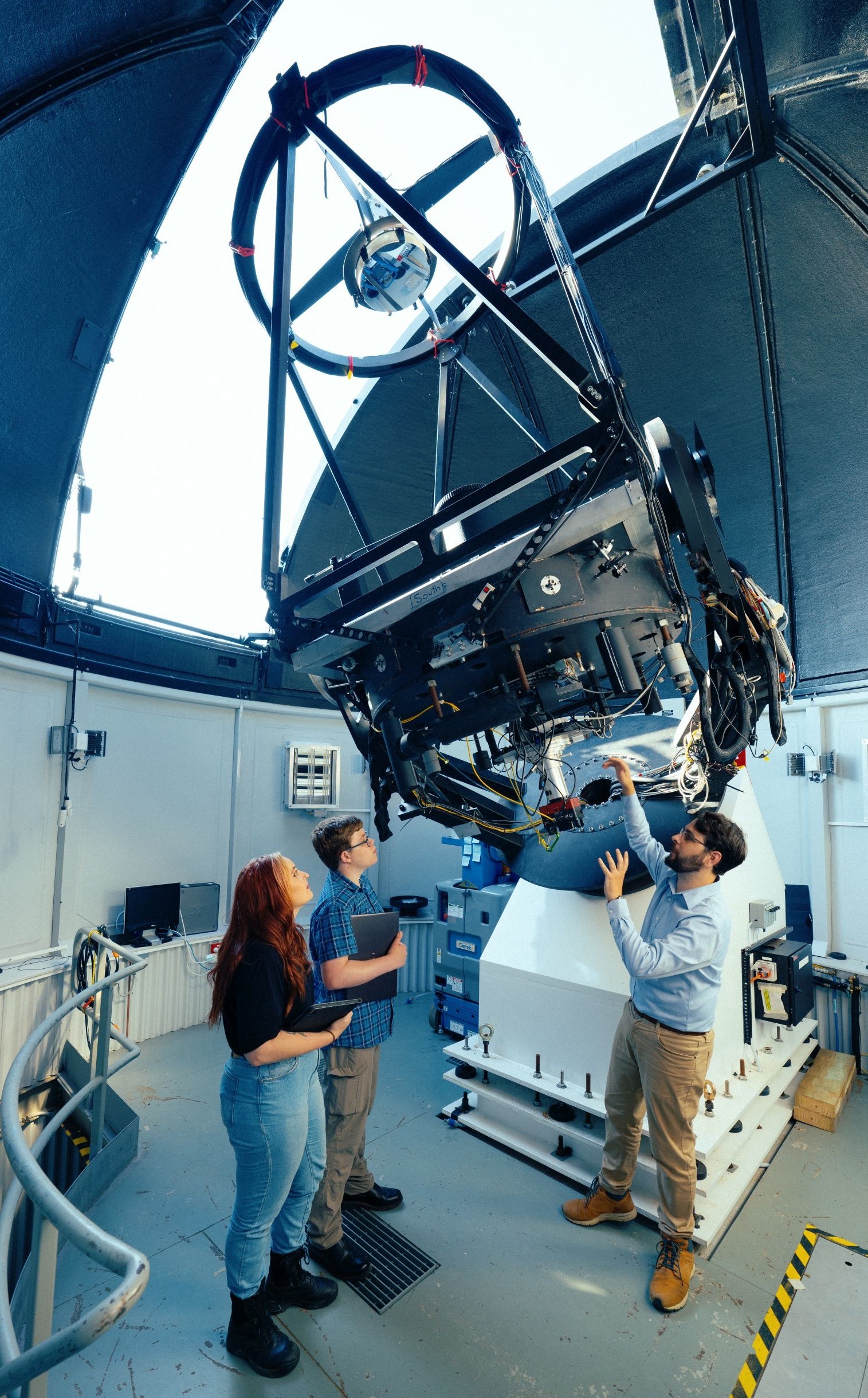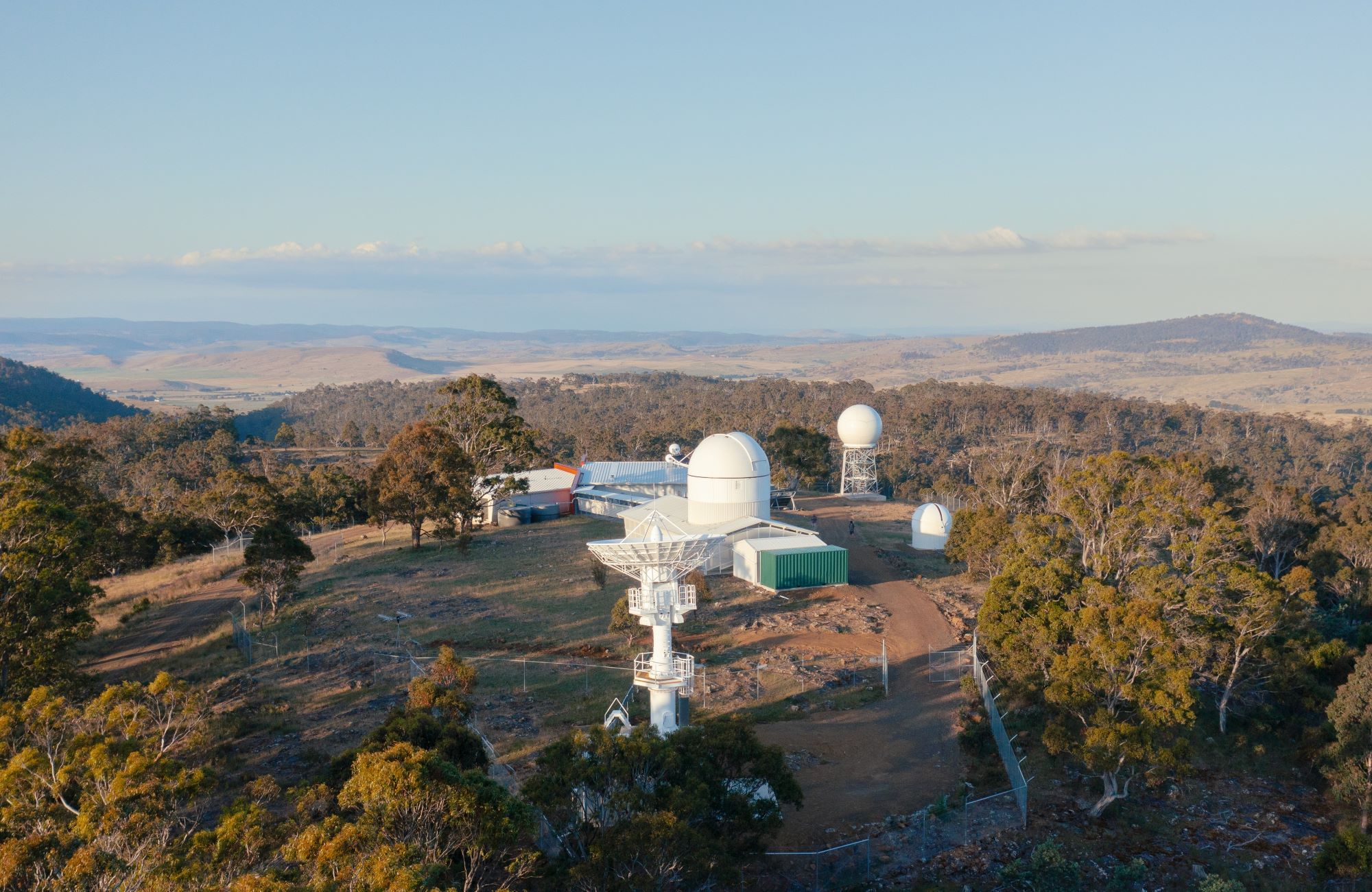For more than 30 years, alumnus Professor Simon Ellingsen has marvelled at the wonders of nature beyond Earth. Now, Ellingsen is the Dean of the School of Natural Sciences at the University of Tasmania, and he is the academic leader for the University’s activities in spacecraft tracking and space domain awareness.
“When I did honours in 1991, we did everything with computers that had significantly less processing power than the phones we carry in our pockets today. Everything was very manual and required a person at the observatory swapping cables, flicking switches and the like,” Ellingsen said.
“My research now mainly focuses on exploring the formation of massive stars.
“This year, using the University of Tasmania’s suite of radio telescopes and others around the world, my team and I were able to show exactly how high-mass stars are born – it’s a really exciting field to be part of.”
He has also used the array of radio telescopes to make measurements of the scale and structure of the Milky Way with unprecedented accuracy.

“Distance is one of the hardest things to measure in astronomy, but it's probably the single most important piece of information.
“Measuring the distance to stars and other objects in our galaxy – the Milky Way – is surprisingly hard: a bit like trying to understand the extent of a forest while standing in the middle of it. But our understanding of the Milky Way is a key part of the foundational knowledge required to make sense of other more distant and exotic galaxies, so this work was a valuable contribution to the field.”
Ellingsen and his team use the University’s world-class telescopes through all their work, and they consider it a priority to continually innovate to improve the state of space science in Tasmania and far beyond.
The University’s history of space and astronomy research dates back to the 1950s when the world’s first radio astronomer, Grote Reber, moved to Tasmania to pursue his research.
Reber saw the undeniable value of our unique geographic situation, close to the geomagnetic pole and perfect for viewing the southern skies and southern lights, ‘Aurora Australis’.
The University is now world renowned for our network of six radio telescopes that stretch proudly across Australia in the globe’s only university-coordinated continental array, all managed remotely from Hobart by a team of local experts from the University.
Together, the team provides ground support to commercial and scientific activities exploring near and deep space, and covering satellites in polar and equatorial orbits.
They have worked with NASA, the European Space Agency (ESA), Japan Aerospace Exploration Agency (JAXA), the Australian Space Agency (ASA), and prestigious space industry leaders like SpaceX, Skykraft and HENSOLDT.
The array that makes up the University’s Southern Skies Network includes three 12-metre antennas in Hobart, Yarragadee (Western Australia) and in Katherine (Northern Territory), a 26-metre antenna near Hobart and a 30-metre antenna near Ceduna (South Australia).

In early 2023, Ellingsen helped to unveil a new 7.3-metre communications antenna at the Greenhill Observatory in southern Tasmania, adding new capability to the network. A partnership between the University and the Australian Space Agency, it was funded jointly by the Australian Government’s Space Infrastructure Fund and the University, with the investment designed to help grow the Australian space sector and advance national space infrastructure.
“With almost 85 per cent of all satellites currently in orbit sitting in this low-earth orbit range, and launches happening at an increasing rate, we’re seeing potential obstructions pop up that need to be managed,” Ellingsen said.
“To launch safely and to keep the assets safe once they are in orbit, we need to know where the stuff that is already up there, like spacecraft and debris, is sitting – this is called ‘space domain awareness’.
“In 2018 there were around 2000 active satellites in orbit, then this doubled in less than two years.
“In August 2023 around 7300 active satellites were in space, and almost 3700 of those were from one company alone: SpaceX, through their Starlink program.
“The growth is exponential, so we are working on innovative techniques and technologies to tackle the challenges this brings, and our new antenna plays an important role in this work.
“In the past, we have only been able to listen to transmissions from spacecraft but now we are able to transmit messages through radio frequency communications to spacecraft, sending commands as well as receiving data,” Ellingsen said.
“Space technology, like satellites, is critical in supporting our everyday life and wellbeing, and we’re working hard at the University to keep at the forefront of this field so we can learn more about the universe and also protect this vital technology in our skies.”
Written by Genevieve Mackintosh for Alumni Magazine Issue 54, 2023.
Connect with our alumni community to discover more.
Top of page: Greenhill Observatory, Bisdee Tier, Southern Tasmania
Photo: Oi Studios



